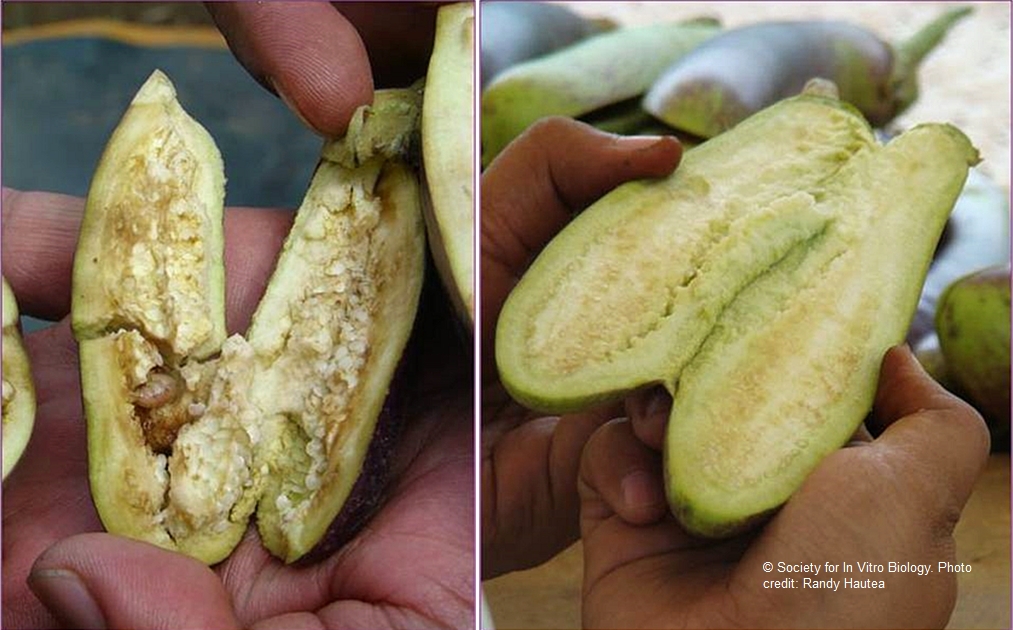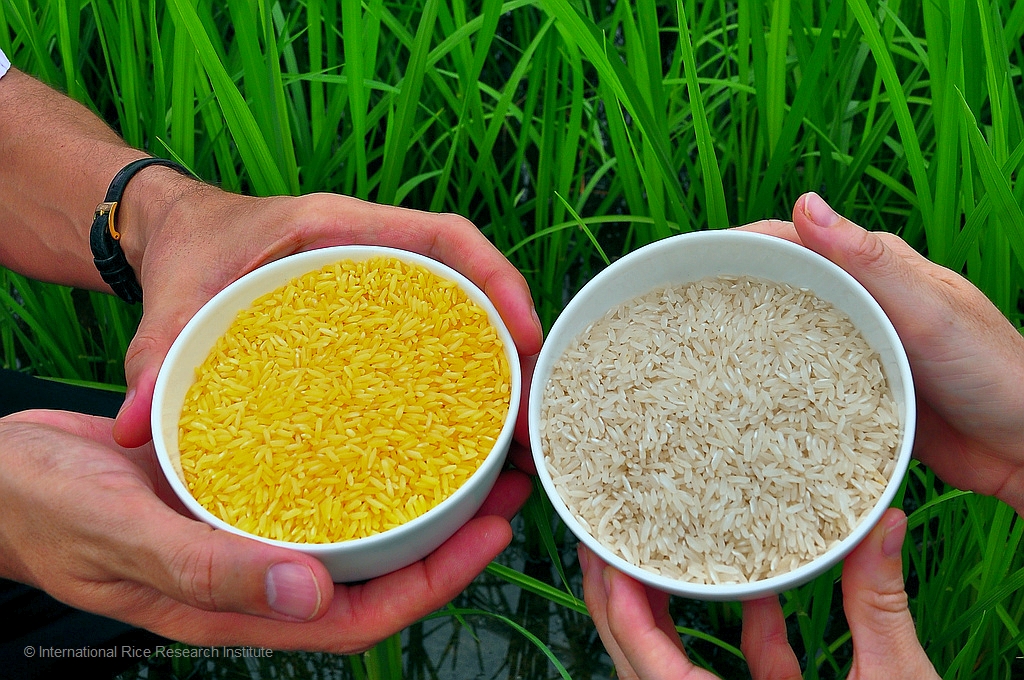by Henrylito D. Tacio
Photos by Biotech Infocenter
They are safe to eat – much safer than street foods. They can help arrest world hunger. More importantly, they can help save the environment.
They are called transgenic crops or genetically-modified (GM) as they have been subjected to biotechnology. British press calls them “Frankenstein food,” named after a character created by novelist Mary Shelley.
“It’s now possible to do stuff that only writers could imagine before and build up completely new life forms. The argument that we need genetically-modified food to feed the world is complete bull,” said Greenpeace International, an activist group, said in a statement.
“If the naysayers do manage to stop agricultural biotechnology, they might actually precipitate the famines and the crisis of global biodiversity they have been predicting for nearly 40 years,” deplored Nobel Peace Prize winner Norman Borlaug.
Bio is derived from the Greek word bios, which means life. Technology is the making, modification, usage, and knowledge of tools, machines, techniques, crafts, systems, methods of organization in order to solve a problem, improve a preexisting solution to a problem, achieve a goal, handle an applied input/output relation or perform a specific function.
The methodology for making GM foods sounds indeed like science fiction. Scientists working in laboratories take genes from one organism – a plant, animal, bacterium, or virus – and splice them to the genes of another organism (a food crop or animal) to produce genetically altered offspring that will reproduce for agricultural purposes.
Ismail Serageldin, during his time as vice-president of the World Bank, sees biotechnology playing a crucial part of agriculture in the 21st century. “All possible tools that can help promote sustainable agriculture for food security must be marshaled,” he said, “and biotechnology, safely developed, could be a tremendous help.”
Food production needs to be raised by 70 to 100 percent in the next 30 years, according to the UN Food and Agriculture Organization (FAO). This is as the population is seen to rise to nine billion by 2050 from the present seven billion.
“The percentage of hunger has gone down but total numbers have not,” said Dr. Wayne Parrott of the University of Georgia-Institute of Plant Breeding, Genetics, and Genomics. Ten years in the decade, people are eating more than what is produced globally, thus the worldwide crisis in food.

Eggplant on the right infested with pest compelling farmers to spray up to 80X per season, Bt eggplant (left) is clean 
Golden Rice grain compared to white rice grain in screenhouse of Golden Rice plants.
Through biotechnology, more crops can be grown on the planet. “At current rates of population growth, conventional techniques may soon be insufficient if farming is to keep pace with the scale of increases required in the 21st century,” wrote Victor Villalobos in an article which appeared in Ceres, an FAO publication.
“We have the technology to meet the needs of the future. What we don’t have yet is the will power, the regulatory system to allow use of the technology that we need,” said Dr. Parrott, who once visited the country.
The Philippines is liable to the poor of the world in helping solve hunger and malnutrition problems. For one, it is host to the field trial of the Vitamin A-enhanced golden rice being conducted by the International Rice Research Institute based in Los Baños, Laguna, and the state-run Philippine Rice Research Institute.
The country is also host to the field trial of the GM Bacillus thuringiensis (Bt) eggplant by the state-run Institute of Plant Breeding of the University of the Philippines Los Baños.
According to Dr. Parrott, the recent destruction of golden rice plants under study attracted global attention. “The global spotlight is now on the Philippines because Golden Rice gets more positive press in the world,” he said.
The National Institutes of Health in Maryland reported that Golden Rice contains up to 35 micrograms of beta-carotene and is “effectively converted to Vitamin A in humans.”
A regular intake of 50 grams of golden rice per day is enough to eliminate symptoms of Vitamin A deficiency. Its bioavailability or its conversion into Vitamin A in the human body has been tested favorably on the target Vitamin A-deficient patients.
Planting biotech crops is also good for the environment. It mitigates the effects of climate change brought about by global warming, curtails the use of pesticides, and saves lands for other uses. “The ill effects of global warming can be reversed by increasing the areas planted to genetically modified crops,” said Dr. Parrot.
“Biotech crops are a land-saving technology, capable of higher productivity on the current 1.5 billion hectares of arable land, and thereby can help preclude deforestation and protect biodiversity in forests and in other in-situ biodiversity sanctuaries,” pointed out Dr. Clive James, founder and chairman of International Service for the Acquisition of Agri-biotech Applications (ISAAA).
Biotech crops that are drought-tolerant can also help conserve water in crop production. “The link between water and food is strong,” admits Lester Brown, president of the Washington, DC-based Earth Policy Institute. “We drink, in one form or another, nearly 4 liters of water per day. But the food we consume each day requires at least 2,000 liters to produce, 500 times as much.”
Drought-tolerant biotech crops have the capacity to use water efficiently and simultaneously less or no-tillage. Dr. James says agriculture consumes seventy percent of water globally, and this practice is seen to be unsustainable in the future with the increasing population.
Every year, three to four million farmers poison themselves annually, and about 300,000 die from pesticide practices. “It’s not only an environmental concern but a public health concern,” Dr. Parrott said.
Using biotech crops may partly help solve the problem. Bt eggplant, for instance, was developed to solve infestation problems of fruit and shoot borer (FSB), causing harvest losses in eggplant. FSB prompts farmers to spray pesticides on eggplant 25 to 80 times during a 120 to 170-day growing season.
Spraying harms farmers, and eating the eggplant brings bigger harm to consumers. Farmers reportedly do not always observe international food safety standards that fruits should be harvested 30 days after the last pesticide spray. In Pangasinan, some farmers were found to even be dipping eggplants in a bucketful of pesticides in order to ensure these are not FSB-infested.
But the big question is: Are biotech crops safe to eat? Vivencio Mamaril, one of the country’s foremost experts on biotechnology, claims GM foods are much safer and more nutritious than street foods. In an article he wrote for BIOLife, he asked:
“We may not all be so assiduous in guarding our rights in this situation, but what about the food we eat? Are we always concerned with the safety of the food we consume? Is food quality in terms of safety our parameter in choosing what we eat? Do we read labels or are we more concerned with the price of the product we buy?”
Mamaril cited the case of street foods sold in front of schools and many other busy places. “Is the selling of street foods regulated to guard the safety of consumers? The answer may be no. And why is this so? It could be because the types of food sold are those known to be commonly consumed. The food quality concern in these kinds of foods could be microbial,” he said.
In contrast, Mamaril stressed that food safety is a real concern for GM products. “Under our existing rules and regulations on GM crops, food safety is one the major concerns before such crops are given a biosafety permit. Other biosafety concerns are animal feeds and environmental safety,” Mamaril noted.
But all is not rosy, however, when it comes to biotechnology. “I believe that this kind of genetic modification takes mankind into realms that belong to God, and to God alone,” deplored Prince Charles in 1998.
Dr. Peter Wills, a theoretical biologist at Auckland University, agrees: “By transferring genes across species barriers which have existed for eons, we risk breaching natural thresholds against unexpected biological processes.”
According to the American Academy of Environmental Medicine, “GM foods pose serious health risks in the areas of toxicology, allergy and immune function, reproductive health, and metabolic, physiologic and genetic health.”
GM foods have been linked with food allergies. Jeffrey M. Smith, founder and executive director of the Institute for Responsible Technology, said that soon after GM soy was introduced in the United Kingdom, reports of allergic reactions to soy products skyrocketed by 50%.
Antibiotic resistance can get worse, Smith claimed. “Antibiotic resistance is already a huge public health problem, and GM foods may well make it worse, since certain genes (such as ones that come from bacteria) used in the process can combine with disease-causing microbes in the environment or in the guts of animals or people who eat them,” he said.
GM foods have also been linked with certain types of cancer. “Cows in the US are routinely injected with genetically engineered bovine growth hormone so that they will produce more milk. Milk from these cows has been found to have higher levels of IGF-1, a hormone linked with breast, prostate, colon, lung and other cancers,” Smith wrote.
If you are given a choice, will you eat GM foods or not? One sage puts his answer this way: “A man who has enough food has several problems. A man without food has only one problem.” Or as Horace puts it: “Only a stomach that rarely feels hungry scorns common things.”

